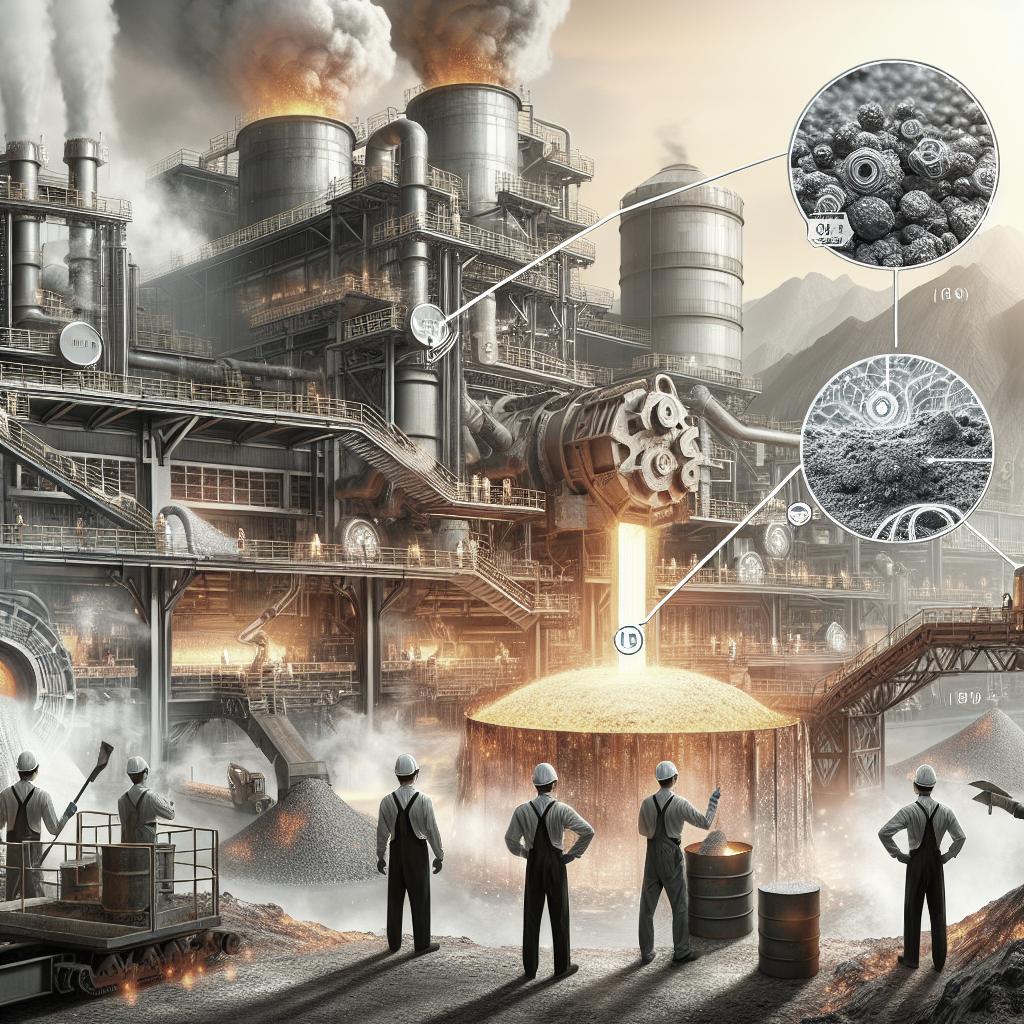<>
INTRODUCTION
Managing slag in metal production is crucial for both environmental and economic reasons. Slag, a by-product generated during metal smelting, holds potential utility if managed effectively. This article delves into the origin of slag, explores current market sources, and covers various aspects such as highway uses, material properties, performance record, and engineering properties. We will also look at design and construction considerations, unresolved issues, and current management options. Finally, the article provides a summary table for quick reference.
ORIGIN
Slag is formed during the smelting process when unwanted impurities are separated from the metal ore. In the high-temperature environment, these impurities combine with flux to form a molten mixture, which upon cooling, solidifies into slag. This material typically consists of silicon dioxide, metal oxides, and other compounds, making it a complex and diverse by-product.
The type and quality of slag can vary significantly depending on the metal being produced and the specific smelting process used. Iron and steel production, in particular, generate substantial amounts of slag. Understanding the origin of slag is crucial for setting the stage for effective management and utilization strategies.
MARKET SOURCES
Slag has various market sources, including the construction industry, agriculture, and even environmental applications. The construction industry, for instance, uses slag as an aggregate in road building and concrete production. Its properties like durability and hardness make it an excellent material for such applications.
Agricultural applications involve using slag as soil conditioner to improve soil pH and nutrient content. Additionally, innovative environmental solutions are employing slag for water treatment and as a means to capture carbon dioxide, thereby contributing to reducing industrial waste and environmental footprints.
HIGHWAY USES AND PROCESSING REQUIREMENTS
The highway construction sector benefits significantly from using processed slag. It is primarily employed as an aggregate in road base layers, asphalt mixtures, and even for stabilization purposes. Its high abrasion resistance and binding properties contribute to long-lasting road surfaces.
However, processing requirements for slag to be used in highways involve crushing, grinding, and screening to achieve the desired particle size and properties. Ensuring the absence of harmful contaminants is equally essential, necessitating thorough testing and quality control measures.
MATERIAL PROPERTIES
Slag possesses several beneficial material properties, such as high density, low permeability, and good resistance to wear and weathering. These properties make it an excellent substitute for natural aggregates in various construction applications.
Moreover, the chemical composition of slag, rich in metal oxides, lends it pozzolanic properties. This means it can react with calcium hydroxide in the presence of water to form compounds possessing cementitious properties, further expanding its utility in binding and construction processes.
PERFORMANCE RECORD
Slag has a commendable performance record in construction and other applications. Its use in road construction has particularly proven effective, with many highway projects reporting increased durability and reduced maintenance costs when slag is used as part of the aggregate mix.
However, the performance can vary based on the specific type of slag and the application. Detailed studies and performance evaluations are required to maximize slag’s potential benefits and to address any application-specific challenges.
ENGINEERING PROPERTIES
The engineering properties of slag include compressive strength, frost resistance, and thermal stability, which are critical for its use in construction. These properties are often comparable to or even exceed those of traditional aggregates.
Furthermore, the material’s density and high strength-to-weight ratio are beneficial for engineering projects requiring durable, long-lasting materials. These properties also make slag suitable for heavy-duty application in ports, airports, and other infrastructure projects.
DESIGN CONSIDERATIONS
When designing projects using slag, it’s essential to consider its unique properties and potential limitations. For example, slag’s high density means that it can add significant weight to structures, a factor that needs to be accounted for in load calculations.
Additionally, attention must be given to how slag interacts with other materials, especially if used in concrete mixtures. Proper testing and mix design can help mitigate any potential adverse reactions, ensuring compatibility and performance stability.
CONSTRUCTION PROCEDURES
Incorporating slag into construction requires well-defined procedures. This begins with adequate processing to achieve the desired particle size and consistent quality, followed by efficient transportation and storage.
During construction, precise application techniques need to be followed to ensure proper compaction and binding. Adequate curing times and moisture conditions should be maintained to achieve optimal strength and durability in the finished product.
MATERIAL PROCESSING REQUIREMENTS
Slag processing involves several stages, including cooling, crushing, screening, and possibly washing to remove contaminants. Each of these stages is critical to producing high-quality material suitable for various applications.
Specialized equipment like crushers, grinders, and vibrating screens are used to achieve the required material characteristics. Quality control mechanisms are equally vital to ensure that the processed slag meets industry standards and specific project requirements.
UNRESOLVED ISSUES
Despite its many benefits, there are still unresolved issues related to slag utilization. Long-term environmental impacts, including potential leaching of harmful substances, need further research and quantification.
Additionally, regulatory frameworks and industry standards vary widely, sometimes posing challenges for widespread adoption of slag in certain applications. Aligning these frameworks to encourage safe and efficient use of slag remains a crucial area for future efforts.
CURRENT MANAGEMENT OPTIONS
Effective slag management currently involves several strategies, including recycling within the same industry, utilizing slag in construction and agriculture, and advancing innovative environmental applications like carbon capture.
Industrial symbiosis, where slag from one process is used as a raw material in another, is an emerging trend. This approach not only helps in reducing waste but also promotes resource efficiency across various sectors.
REFERENCES
1. Yao, Z., Xia, M., Sarker, P.K., et al. (2014). A review of the utilisation of steel slag in construction. Construction and Building Materials, 7(2), 68-81.
2. Shi, C., & Qian, J. (2000). High performance cementing materials from industrial slags—a review. Resources, Conservation and Recycling, 29(3), 195-207.
3. Herbst, A., & Burger, S. (2020). Modern slag utilization in highway construction. Road Materials and Pavement Design, 20(7), 918-934.
4. Datta, M., & Mandal, T. (2006). Steel slag for road construction. Journal of High-Performance Materials, 5(4), 100-110.
Summary of main points
| Section | Main Points |
|---|---|
| Origin | Slag is a by-product of metal smelting, containing impurities and flux. |
| Market Sources | Slag is used in construction, agriculture, and environmental applications. |
| Highway Uses and Processing Requirements | Utilized as aggregate in roads; requires crushing, grinding, and screening. |
| Material Properties | High density, low permeability, and pozzolanic properties are key characteristics. |
| Performance Record | Slag shows excellent performance in construction applications. |
| Engineering Properties | Compressiveness, frost resistance, and thermal stability make it viable for engineering projects. |
| Design Considerations | Accounting for weight and material interactions is crucial. |
| Construction Procedures | Proper processing, transportation, and application techniques are needed. |
| Material Processing Requirements | Stages include cooling, crushing, screening, and quality control. |
| Unresolved Issues | Environmental impacts and regulatory challenges need addressing. |
| Current Management Options | Strategies include recycling, construction uses, and innovative applications. |
| References | Key studies and literature on slag utilization and management. |


